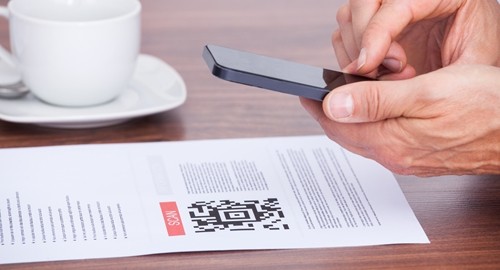New businesses need to market their services in the best way possible. Generating brand recognition is one of the most important steps for growing companies, and also one of the easiest ones to mess up. It's easy to get excited about marketing technologies and dive into the coolest trends, but some marketing trends need to be given extra care. Quick Response (QR) codes are one marketing trend that can be beneficial if it is used well – yet it often isn't. While QR codes make a great addition to printed marketing materials like business flyers, they require more effort than simple text. Here's how to make sure your QR codes bring you a response.
Audience
When considering any kind of marketing tool, it's important to think about who you're trying to reach. In the case of QR codes, your target audience is going to have a pretty marked effect on how well your QR code performs. It all comes down to who uses QR codes. The QR code generator and tracking site, UQR, publishes yearly data about QR code usage organized by device, gender, and interests. Consistently it has found that the biggest users of QR codes are 25- to 35-year-old men who are interested in technology. If this is your audience, QR codes are definitely right for you. They can also be useful if you're mostly speaking to people under the age of 45, but use drops off dramatically for older audiences. If your business focuses on art programs for the elderly, QR codes are probably not your best bet, marketing-wise.
Use
QR codes are somewhat unique in the marketing world because they require interaction. Many other forms of marketing are relatively passive, simply asking the audience to take in information. QR codes require more than that: To use one, the reader has to take out their phone, find (or download) an app, and scan the actual code. This interactive quality is part of what makes QR codes such effective tools when they're used, but it's also why a lot of people don't bother to use them. For QR codes to be effective, there has to be a strong incentive that makes them worth the bother of actually scanning them. Don't simply slap a QR code on your flyers or business cards and call it a day: Include a strong call to action that tells readers why they're interested in where the code leads.
Things to Consider
Because QR codes need to be scanned to be useful, don't let your placement get in the way of that. They make a lot of sense on flyers, but less sense on car magnets. You never want your QR code to be anywhere that's moving a lot, or would be difficult or awkward to scan. You also want to make sure the QR code itself is actually scannable. If a QR code is too small or blurry, a phone's scanner might not even recognize the code to begin with. Finally, make sure wherever your QR code goes is mobile-friendly. The whole point of QR codes is mobile engagement: You don't want to send scanners to a site they can't use.

